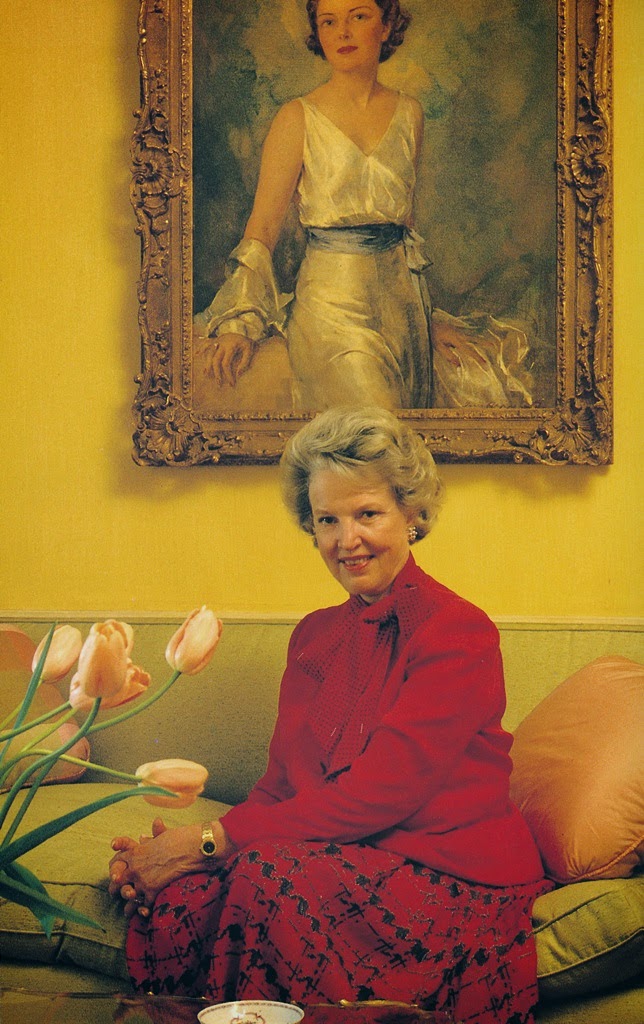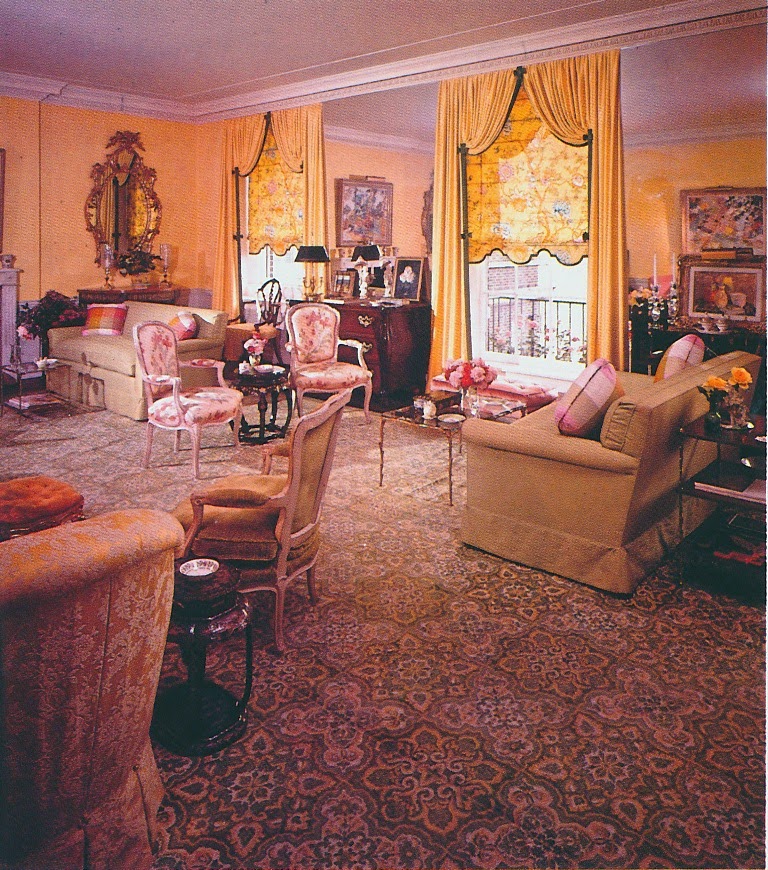I spend a lot of my morning personal grooming time (i.e., makeup and hair) thinking about design trends. By "trends" I don't mean trendy, but rather, the dominant styles of the day. And the conclusion that I have come to is that over the last decade or so, not much has really changed.
We started the 21st-century with the Hollywood Regency revival and the David Hicks/Swinging Sixties style. Within a year or so, these trends morphed into the WASP-y, colorful, Palm Beach look. After that, it was the exotic, boho-chic look of ikats, poufs, and Indian prints. And today, all of these looks remain popular to varying degrees.
What all of these looks have in common is that they have maximalist DNA: bright, saturated colors; bold, overscaled pattern; and, at times, a rather free-wheeling, decorate-with-abandon sensibility. The other shared trait among these trends? Their last bouts of popularity were in the mid-to-late 1960s and early 1970s. In a way, it is as if we are stuck in the Johnson and Nixon administrations, only with the benefit of the internet and the iPhone.
As much as I admire these aforementioned styles, I am ready for something new. It's time for a change. But of course, the big question is, what's next for design? The look to which I have gravitated for the last few years is one that was fairly prevalent during the 1970s and early 1980s. It is defined by neutral-though-rich colors (such as chocolate brown, black, and caramel, all of which look fabulous at night,) smaller-scaled pattern, glimmering accents of chrome or brass, and the pairing of elegant antiques with contemporary upholstered furniture. It's a look that I believe evolved from the fabulous chocolate brown apartment of Billy Baldwin, although Van Day Truex certainly deserves some of the credit, too.
What I like most about this look is that it makes an impression without screaming for attention. Despite the restrained color palette and small-scaled, typically two-toned prints, there is no lack of glamour, drama, dazzle, or pizzazz. And to execute this look well, one has to practice self-discipline and self-editing. I think that one of the downsides to some recent design trends is that editing and restraint have been forgotten, something that has often resulted in "anything goes"-type rooms. (I think that the designer Joseph Braswell put it best when he said, "Very often a good room is ruined by too many stories." ) Finally, it's worth noting that although all of the examples featured here were decorated by male designers, women could just as easily live in such rooms. The overall aesthetic might be masculine, but it doesn't seem overtly so to me.
Will this classic 1970s-era sensibility make a comeback? I hope so, because I do think it's a worthy successor to today's current trends. If you're like me and you're ready for a change, please let me know what you think the next big look will be.
The Manhattan apartment of Van Day Truex
Albert Hadley's living room
The Manhattan apartment of Ferris Megarity
A room designed by Kevin McNamara
The living room of Thomas A. Morrow III
The East Hampton cottage of Harry Hinson
Dining room decorated by Angelo Donghia
In the Los Angeles home of Dennis Leen
In the Sutton Place apartment of designer Joseph Braswell
In the New York townhouse of Jay Crawford and Anthony Tortora
In the apartment of designer Tom Britt

































































































































































